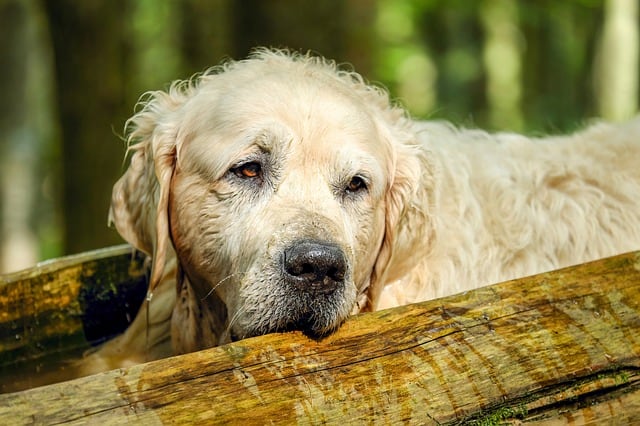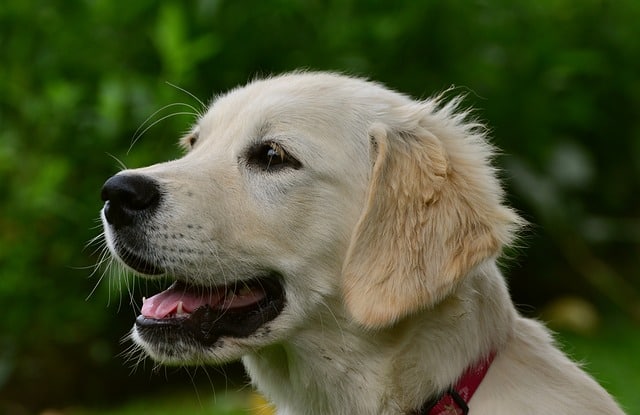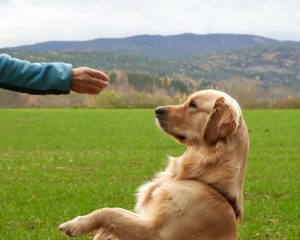The Golden Retriever is one of the most popular breeds of dogs that are chosen by families for adoption and inclusion as family. Golden Retrievers are a gentle dog, they are super friendly, very energetic and also very loving.
Contents
However, Golden Retrievers are also known for a not so good aspect. They are prone to hip dysplasia. This is a medical issue that happens due to genetic and also environmental factors in the dog’s life. Hip Dysplasia is a progressive and there is no way to reverse this condition for the Golden Retriever or other dogs.
Hip Dysplasia may show up twice in a Golden Retriever's life. Once when they are still young, at around 6 to 14 months, this is likely due to skeletal immaturity, and it is commonly called loose hips. The second time it will rear its ugly head in a dog’s life is when they are further into the maturity stage. This will be around 4 to 8 years old. The main cause for the Hip Dysplasia at this point is OsteoArthritis.
The hip dysplasia will likely be first noticed during routine exams from the vet. They are trained to watch for the hips and the changes that happen over time. This does not mean that life is done for your Golden Retriever, it means that he or she will still be able to live a long and happy life, just not as energetic and without the ability to run and jump as they once did.
What You Should Know

What will be recommended by your vet is called Conservative Management. This will include modifications to their routine exercise routine, it will include physical therapy treatment and rehabilitation, as well as anti-inflammatory medications and analgesics to minimize the pain levels.
If the Golden Retriever does not respond to this treatment, there may be a need for a total hip replacement. Be comforted by the fact that with proper treatment and management, the prognosis is excellent for a hip dysplastic Golden Retriever.
Exercise is an important aspect of the medical management process. The range of motion is important so the hips do not continue to deteriorate further. Being a common problem in large breed dogs, hip dysplasia is hereditary.
Do not be mistaken, any size breed is subject to having hip dysplasia. We need to try and understand how this works, or rather how the hips do not work properly in the Golden Retriever and other breeds.
Causes of Hip Dysplasia
Just as with humans, the hip joint includes a ball and a socket connection. When it comes to hip dysplasia, this means that the ball and the socket do not fit together properly. Instead of moving smoothly inside the socket, the ball joint rubs and grinds against the socket.
This causes the bones to wear down as they rub against each other. In time, there is deterioration of the hip altogether and loss of the function in the joint.
Hereditary
There are a few other factors besides, hereditary, that can cause this issue for the larger breeds. Growing too fast, or too much at a time, the types of exercises that the dog has, improper weight management and also the nutritional aspects.
Vitamins and Minerals
The dog must have certain nutrients, vitamins and minerals to sustain its body and all the functions. If the human is not providing the proper nutrition needed, the dog will experience health issues such as hip dysplasia. These factors will enhance and magnify the genetic disposition.
There are some foods that are especially made and formulated to help maintain the growth in large breed dogs. These foods slow down the growth of the bones, thus in delaying the issues of hip dysplasia. The other dysplasia is elbow dysplasia, as well as other joint issues that can happen for your Golden Retriever, plus many other breeds.
This should be something that you discuss with your vet right away. If you start a puppy on nutritionally proper foods, the foods that will help delay or prevent the joint health issues that dog’s can develop.
Impromer nutrition
Improper nutrition can also lead to a quicker development of hip dysplasia. The excess weight on a dog can and will put additional stress on the hip joints and sockets. The additional weight also will exacerbate any pre-existing conditions.
Too much exercise
Oddly enough, too much exercise can also exacerbate the condition, just as much as too little exercise. This is another subject to discuss with your veterinarian, how much exercise is appropriate exercise for your Golden Retriever.
There is a supplement that is recommended for large breed dogs. There are also millions of humans who use this supplement, in a different form of course. Glucosamine is a substance that stimulates cartilage growth and thickens the synovial fluids in the joints. Glucosamine is often used in the early stages and then throughout the progression. There is much hope that it will help in early prevention.
Symptoms of Hip Dysplasia

The signs of hip dysplasia may seem quite obvious, but that is only if you know your dog well. Many dogs will develop hip dysplasia along with osteoarthritis, some may begin showing signs beginning at the age of 4 months.
Some of these signs include:
- Decreased Activity
- Showing difficulty or reluctance when it comes to standing up, jumping, running or climbing the stairs.
- Range of motion diminishes with time
- Obvious lameness in the hind quarters, lack of movement
- The gait becomes more of a bunny hop when moving
- Audible grating of bone on bone when the joint is moved
- Thigh and leg muscles start to deteriorate
- Pain
- Stiffness and obvious limping
- The front shoulders will increase in muscle mass as they compensate for the lack of muscle in the hind quarters.
Treatment for Hip Dysplasia

These are the most common forms of treatment that your veterinarian will order for helping the Golden Retriever, or other breeds of dogs. These treatments range from lifestyle changes to surgery. Surgery is of course dependent on the financial aspects of the owner and also if the dog is a good candidate for the treatment option of surgery.
The other treatment options include the following:
- Weight reduction, which takes the stress off the joints and especially the hips
- Restriction of exercise, and definitely not on hard surfaces
- Physical therapy
- Joint supplements, such as Glucosamine
- Anti-inflammatory medication and corticosteroids
- Joint fluid modifiers
For the Golden Retrievers or dogs that are good candidates for surgery, there are a few different options. Double or triple pelvic osteotomy this is a surgery that would be performed on the canines less than 10 months old. It involves cutting the pelvic bone and rotating the hip joint as needed.
Femeral head osteotomy
Femoral head osteotomy is a surgery that can be performed on young or mature dogs. This is more detailed as the hip ball joint is cut off and removed. This does not return movement back to normal, but it does provide more movement with less pain.
Hip replacement
Total hip replacement This is obviously the most effective form of treatment that will enable the Golden Retriever or other dogs to return to a more normal gait, with less pain. With this surgery, the entire hip joint, socket and ball is removed and artificial replacements put in their place. This will also eliminate the majority of the pain associated with hip dysplasia.
The Veterinarian will obviously discuss with you, the owner as to the best option for your baby. He or she will sit down and explain all options in detail, he will be sure that you understand what each type of surgery means and what it entails. He will be there to answer your questions, and hopefully be able to help you come to a decision.
What we do need to remember is that hip dysplasia cannot be totally prevented. We can work to follow the veterinarian suggestions and maintain a healthy weight, stick to the recommended exercise program and of course to feed our babies a proper and nutritious meal plan that is also recommended by the veterinarian.
Conclusion

I have mentioned that speaking to your vet is highly important for everything when it comes to your Golden Retriever or other breeds. I do this as it is necessary to maintain the health and life of your dog.
The veterinarian is well trained in what the dog needs and they are there to help you through every aspect of the dog’s life. They definitely want what is best for the dog healthwise. Just like you want your baby to be the healthiest and happiest you can help them to be so that they live long and healthy lives.
When the proper precautions are taken, routine medical visits, exercise, proper feeding and plenty of love of course, hip dysplasia can be taken care of and your Golden retriever will know that you love him or her just as much today as you did on day one. We do this for our canines because they are our family, they are part of our lives, they make us happy and we need to keep them happy and healthy.





Leave a Reply
You must be logged in to post a comment.